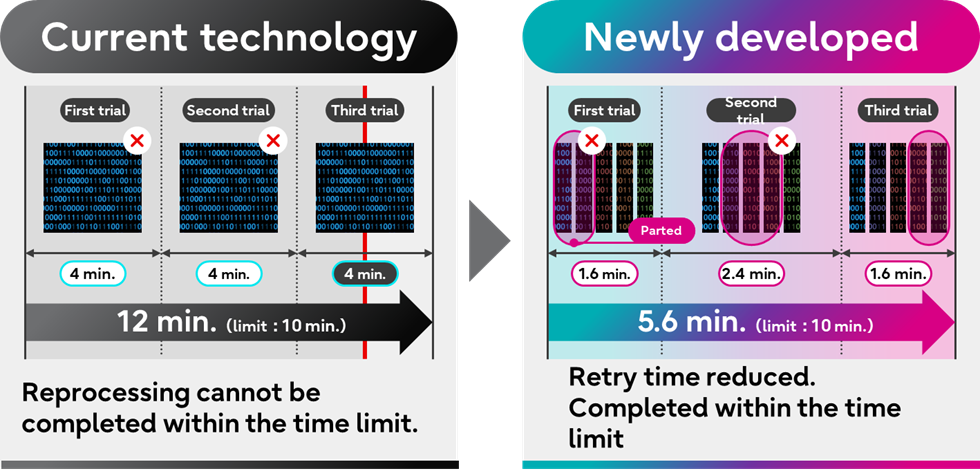PRESS RELEASE
Fujitsu and Yamaguchi University develop low-power edge computing technology for near real-time image processing on small satellites
Fujitsu Limited
Yamaguchi University
Kawasaki and Yamaguchi, Japan November 27, 2025
Fujitsu Limited and Yamaguchi University today announced the successful development of a low-power edge computing technology that enables image processing on small satellites using redundant GPUs within 10 minutes (near real time). This innovative technology is designed for low-Earth orbit Synthetic Aperture Radar (SAR) satellites, which illuminate the Earth's surface with microwaves and receive reflected waves to create two-dimensional images.
The new system offers high fault tolerance against cosmic radiation and operates efficiently within the typical 20W power constraints of small satellites. It can process data, including error detection and reprocessing, within approximately 10 minutes. Validated with raw SAR data on a satellite prototype, the technology successfully performed both L1 [1] (raw data to 2D image) and L2 [2] (image to observed quantity) processing, accurately determining ocean surface wind speeds. This versatile technology is also applicable to optical and multi-hyperspectral satellites.
Fujitsu plans to release the developed programming environment, Fujitsu Research Soft Error Radiation Armor, to users in Japan in February 2026.
Moving forward, Fujitsu and Yamaguchi University will continue to refine correction data accuracy. Fujitsu aims to advance services and operations by enabling near real-time AI processing on satellites, realizing previously unfeasible applications. This will involve in-orbit validation on actual satellites to promote user-friendly data processing systems across various satellite types.
About the new technology
Fujitsu and Yamaguchi University leveraged Fujitsu's computing technologies, cultivated through its expertise in AI and supercomputer development, and Yamaguchi University's satellite data (remote sensing data) analysis technologies to develop the following key functions:
-
Highly fault-tolerant computer system with redundant configuration operating within satellite power limits
● System employs redundant processors to detect errors, a critical feature for operating within the challenging space environment for efficient
● To meet satellite power constraints, the system dynamically manages computing resources and program execution, ensuring both performance and energy efficiency -
Development of a programming environment for computer systems resilient to cosmic radiation errors
● Robust programming environment (library) using Linux, Python, and open-source software
● Library simplifies the implementation of error detection, computer restarts, and recalculation functions, and includes a novel technique to improve error processing efficiency by dividing computational jobs

A prototype system, operating under 20W, successfully processed raw SAR data (L1 and L2) in under 10 minutes, achieving near real-time performance. By applying compression, correction, and wind speed estimation models to the time distribution of radar reflection intensity from the ground, ocean surface wind speeds could be calculated in units of several hundred meters (see Figure 2 below). Real-time calculation of ocean surface wind speeds from satellites is expected to contribute to maritime safety by providing immediate notifications of high-wind areas to vessels.

Background
Satellites, orbiting in the range of 200 km - 36,000 km from the Earth’s surface, offer extensive Earth observation using UV, IR, and radar for diverse applications like object detection, environmental monitoring, and resource mapping. However, traditional ground-based data processing introduces multi-hour delays. Small satellites face strict power limits (typically under 20W) and require robust error detection against cosmic radiation, which conventional programming struggles to address.
Note
-
[1] L1 Processing:
Process to calculate the Earth's surface conditions from the time distribution of radar reflection intensity, also known as compression processing.
-
[2] L2 Processing:
Process to apply corrections based on information about the Earth's surface and atmosphere to L1 processed data, which then derives physical quantities such as ocean surface wind speed and wave height from the state of the reflected waves.
- [3] These figures contain modified Copernicus Sentinel data [2025].
Press Contacts
Fujitsu Limited
Yamaguchi University
(For inquiries regarding research results)
Organization for
Research Initiatives, Yamaguchi University
Prof. Dr. NAGAI Masahiko
E-mail nagaim*yamaguchi-u.ac.jp(replace * with @)
(For media inquiries)
Public Relations, Yamaguchi University
E-mail sh011*yamaguchi-u.ac.jp (replace * with @)
All company or product names mentioned herein are trademarks or registered trademarks of their respective owners. Information provided in this press release is accurate at time of publication and is subject to change without advance notice.
Date: 27 November, 2025
City: Kawasaki and Yamaguchi, Japan
Company: Fujitsu Limited, Yamaguchi University
